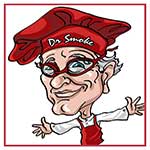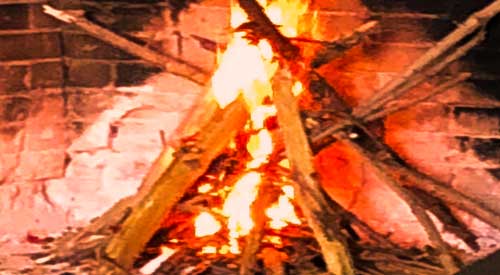Wed 5 Jun 2019
PRIMARY HEAT SOURCES FOR GRILLING MEAT
Posted by DrSmokeRead other related stories: General Smoking Information , Smoking Tips , Wood Cooking Methods
No Comments

Let’s explore the primary heat sources for Grilling!
Exploring the primary heat sources for Grilling Click To Tweet

PRIMARY HEAT SOURCES FOR GRILLING-
We grill outdoors frequently yet I bet not many of you know the science behind grilling. What happens to food when we grill? How does food cook to a safe level on a grill?
Let’s cover the types of heat sources that cook grilled meats and help you decide the ideal method for cooking your favorite animal proteins.
What Is Meat?
Before I get into the types of heat sources to do the actual grilling, let’s talk about what meat really is. Meat is muscle from various animals. It is made up of 75% water, 20% protein, and 5% carbohydrates and fat. Each cell of a muscle is made of two proteins: actin and myosin.
Now breaking down the proteins of meat, these are made of amino acids which react nicely when salt ions are added. Thus, when salt ions are added, the water-retaining capability of meat increases which results in production of a juicy piece of grilled meat.
Now these proteins in meat are coiled when the meat is raw. Add heat, and these proteins uncoil as the protein molecule bonds are broken.
Note – heat shrinks the muscle fibers which will then squeeze out water allowing the molecules to recombine. Brining or marinating meat will reduce this shrinkage of the fibers.
Primary Heat Sources for Grilling
There are three heat sources for cooking foods: conduction, radiation, and convection. Let’s get an understanding of each one.
Conduction primary heat sources for grilling:
The best example of conductive heat is when meats are placed directly on the grill grates over direct heat. The transfer of the heat energy to the grill grate brands the food item with grill marks. Heat is transferred from the source (burner, lit charcoal or wood, electric element, ceramic plate) to the food which then engages the cooking process. The meat cooks from the outside to the inside due to heat transfer. The surface of the meat gets hotter and transfers to the center which is why people who rely on the meat’s outside coloring will under-cook the meat inside.
Convection primary heat sources for grilling:
Convection heat is transferred with a fluid which can include water (think boiling a food item like potato), oil (think French fries), and air (think your oven or two-zone cooking on a grill). Now, convection cooking only occurs on the exterior of the food while conduction heat cooks the interior.
Radiation primary heat sources for grilling:
My favorite example of radiation heat is cooking marshmallows on a stick held near a campfire. Essentially, this is how charcoal/wood grills cook. You elevate the food over the heat source.
What influences grilling is the length of time and the type of heat. Add in difference between temperature and heat as materials also play a part in the transfer of the heat energy. Water transfers slower than metal.
Radiation produces more heat than convection. You can easily increase the radiation heat on a charcoal grill by increasing the number of charcoal pieces. Gas and pellet grills produce convection heat. Convection heat dissipates easily by air currents. Infrared units known as intense infrared (IR) have marketed that they produce a better sear on meats. What is happening is heat energy is delivered faster than convection heat units but slower than conduction units. You also have the risks that the delivery of this energy via IR could be uneven resulting in black/burnt areas while other areas of the meat are light in color.
Primary Heat Sources for Grilling- Types of Heat on Different Equipment
Let’s look at the heat types for specific equipment so you know how the energy used cooks your meat.
Gas Grills:
Burner produces radiant heat that in turn heats the heat shields above the burners producing radiant and convection heat (note gas grills have permanent vents built in the unit). The grill grates then heat and produce conduction heat to the exterior of the meat which converts all this heat energy to conduction to cook the meat thru the interior.
Note gas grills can be set up with direct cooking (all burners on) and indirect cooking (only half the burners lit). If you cook with the lid up on a gas grill, you allow radiant heat to escape which will cool the top of the meat.
Charcoal/Wood Units:
Radiant heat is produced at the bottom of these units with the grilling grates absorbing the heat energy that produces conduction heat. Heat from below the meat is absorbed and converted to conduction heat to cook the interior. The lids on these units will produce convection heat due to the built-in vent that has a control setting.
Like gas units, charcoal/wood units can be set up direct or indirect cooking method with the foods absorbing indirect convection heat from all sides which then converts to conduction heat to cook the meat’s interior.
Flat Tops/Plancha/Griddles:
Whether gas or charcoal fed, the fuel source produces radiant heat while the solid cooking surface produces conduction heat to the meat. Due to direct contact of the meat to the solid cooking surface, the direct contact side of the meat will brown easily while this no lid unit allows radiant heat to escape causing the top of the meat to cool and not brown.
Infrared Units:
Burners on these units produce radiant heat which then heat energize the ceramic, glass or metal plate. Grilling grates absorb the heat and produce conduction heat where the surface of the meat contacts the grate.
Always remember, on any unit regardless of heat source, thickness of the meat and not poundage will determine cooking time as you must remember that conduction cooking progresses to the interior. You must use a digital thermometer to ensure meat is cooked properly before consuming. Never rely on the outer coloring of the meat or recommended time per pound in a recipe. A digital thermometer is the only way to know.
Making you an informed consumer through valuable articles like this one. Leave us a comment and follow us or subscribe for more great recipes, techniques, tips, and the science behind the flavor and fire. That’s SmokinLicious®
SmokinLicious® Products:
Wood Chunks- Double & Single Filet
Wood Chips- Minuto®
Smoker Logs- Full & Quarter Cut
Charwood

More related reading on the primary heat sources for Grilling & Smoking tips and techniques see our directory on previous blogs!
Other blogs you may like:
-3 METHODS OF SMOKING BOSTON BUTT FOR AUTHENTIC BARBECUE FLAVOR
-TEMPERATURE, MATERIAL AND TIME DETERMINE WHEN ITS CALLED BARBECUE
-PICKING YOUR IDEAL FIRE SETUP FOR COOKING
-WHY TWO-ZONE COOKING METHOD LET’S YOU WALK AWAY FROM THE GRILL

Dr. Smoke- Let’s become better chefs and explore the primary heat sources for grilling!

